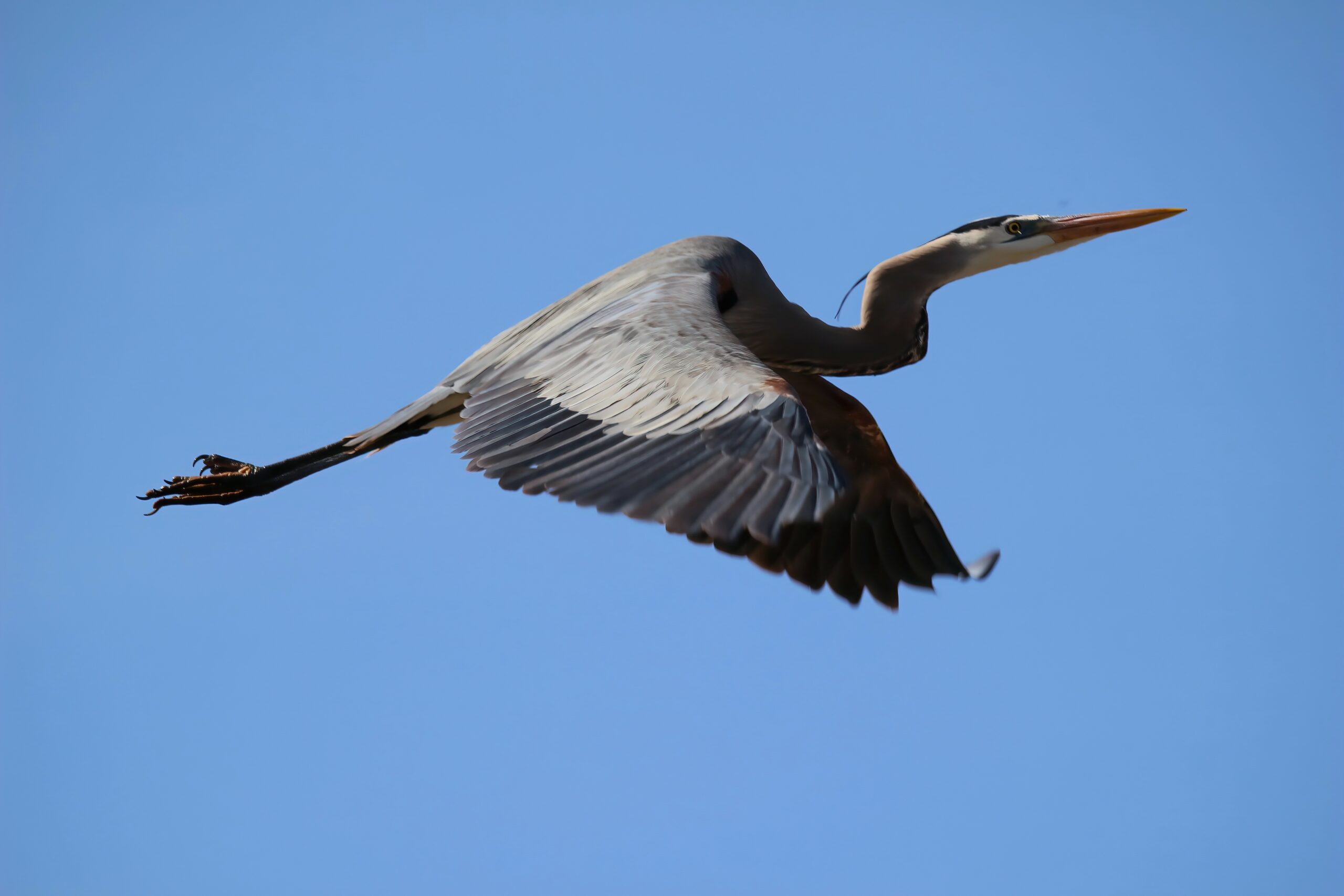Combining height, beauty, a regal sensibility, radiating a calmness in a fast-paced world, yet having lightning reflexes and muscle speed to strike fish as needed, the Great Blue Heron, literally stands above all other herons in North America.
Nearly 4’6” (54cm) in height and weighing only 5.5 pounds (2.5kg), thanks to its hollow bones, this heron quietly stalks the edges of reed beds and bulrushes, peering into the water, motionless, and waits. Its long legs, sinuous neck and dagger-like bill will be used to great effect. Years back at Crane (Moore) Lake, near Cold Lake, Elaine and I were canoeing along a sizable bed of reeds. In the shallows, poised in hunting mode, a Great Blue Heron, peered into the water. As if struck by lightning in a millisecond, the heron pierced the water and held in its bill, a 25 inch (63cm) pike, In less than a few seconds, the pike was flipped by the heron so that the pike’s head would be the first part of the meal. Watching the pike enter the gullet and disappear seemed like an apparition. I’d found my “spirit bird”.
Fish populations are an essential to attract this still water predator. Predominantly blue and grey in colour, and sporting a wide, black stripe over its eyes, herons are gifted with an eye-catching black crown and plume to add to its beauty. These herons can hunt both day and night as they have excellent night vision supported by a high percentage of rod-type photoreceptors in their eyes. Enhancing their hunting skills, the herons’ neck vertebrae have evolved to give a longer strike distance.
Although fish are a primary target, opportunity knocks in different forms for herons. If fate intervenes, small mammals, other birds, reptiles, salamanders and frogs join in the diet diversity of the heron. Locally, we’ve seen herons along the west shore of Cove Beach, fishing for pike. At times, very early in the morning, Elliston Park Prussian Carp populations tempt fate when swimming between the legs of a heron. I wondered if herons would tackle large fish. In one of the ponds in Fish Creek Provincial Park, I founds my answer. A striking heron had speared what appeared to be a 4 to 5 pound (2kg) fish, shaking it in the air. Luck was on the side of the fish as it slid off of the bill and escaped.
You may indeed wonder where heron’s nest. Interestingly Great Blue Herons nest in colonies, building multiple nests in large trees. These colonies can number into the hundreds in isolated locations. High River is home to a smaller colony, located along the river and on private land.
Often fishing and foraging alone, it’s not uncommon to stumble upon a heron, tucked quietly along the reeds and bulrushes in almost any wetland. In flight, the slow wing flaps, the “S” shaped neck and the legs trailing behind the blue-grey feathers are what you will see as your possible spirit bird flies to the next hunting location.
My Spirit Bird

In response to Canada's Online News Act and Meta (Facebook and Instagram) removing access to Canada's local news from their platforms, Anchor Media Inc encourages you to get your news directly from your trusted source by bookmarking this site and downloading the Rogue Radio App. Send your news tips, story ideas, pictures, and videos to info@anchormedia.ca.





